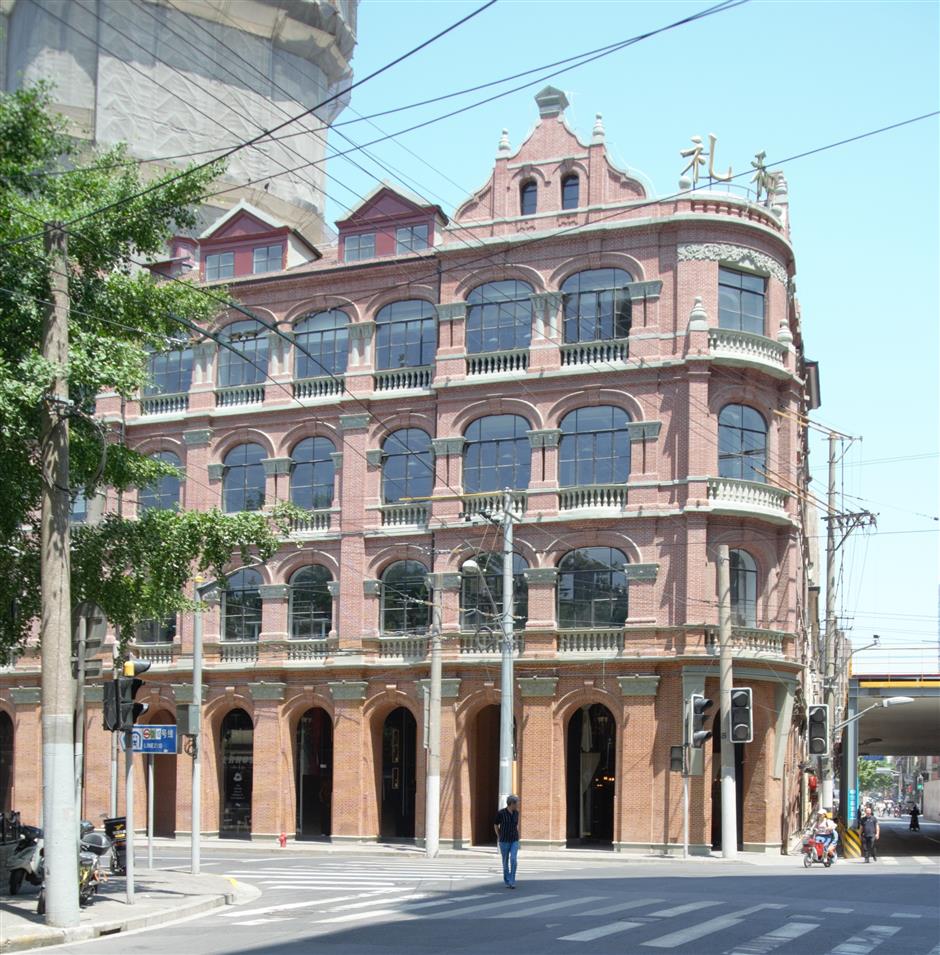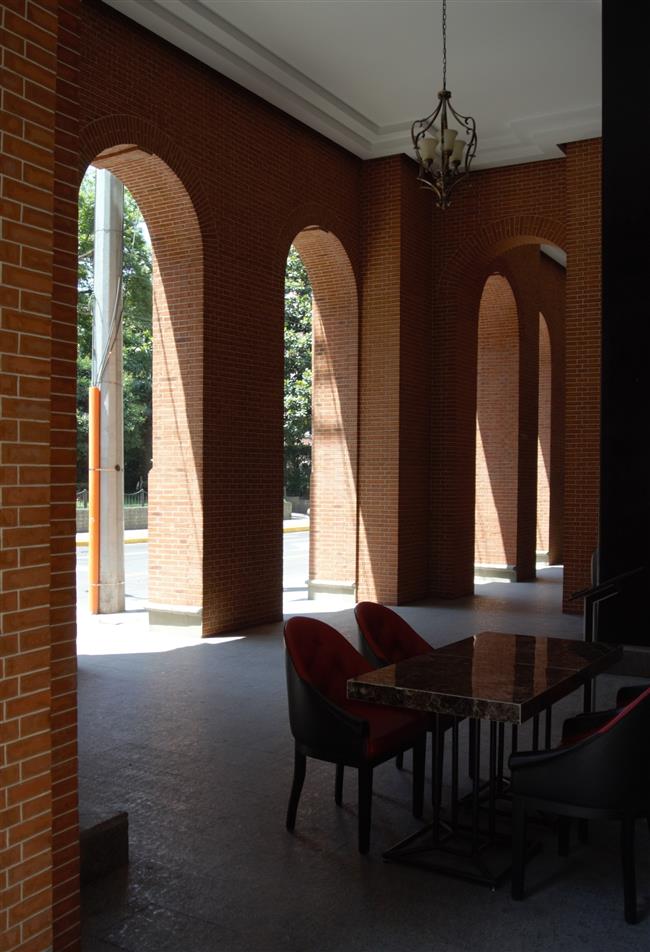Legacy of German trade company survives in a new century

Shops and offices thrive in an old building that lives into a new century.
The Carlowitz Building on Jiangxi Road M. mirrors the architectural history of the nearby Ci’anli Building, but its facade is red brick, not gray. Work has just been completed on transforming the building into a complex of shops and offices.
The brick-and-wood structure was erected in 1898 and purchased by German firm Carlowitz & Co as its China headquarters. The company sold machinery and was one of the largest German trading companies in the Far East at the time.
The company’s importance was emphasized by the location of its offices only a few steps from Nanjing Road ─ then called "Shanghai’s Fifth Avenue.” The enormous structure was among the largest Western-style buildings in the area.
The redbrick facade of the building exquisitely displays all-white architectural ornamentation. Even more eye-catching are the verandas with semicircular arcades on the ground floor and smaller arcades on the floors above. Baroque-style gables top the building.
After the founding of the People’s Republic of China in 1949, the building housed offices and institutions of the Huangpu District government.
Like many historic buildings on the Bund and along Nanjing Road, the interiors were subdivided into hodgepodge fashion and interior decor was uninspiring. Original architectural details were demolished or covered over by cement mortar. The signature verandas were sealed up.
Liao Fang, architect for the building’s restoration, says it was a hard decision to return the veranda to its original appearance.
“A considerable amount of commercial space, so pricey at this location, was lost in restoring the veranda,” he says. “But the public space has been greatly improved. Renovating historic buildings is a complicated job.”
Considerable research is required in restoration work, but holes always remain, he says.
“It’s a pity that we haven’t figured out who designed the building,” Liao says. “In the end, we had to make assumptions based on nearby buildings of a similar style.”
The Carlowitz headquarters covered two adjacent buildings. One was a warehouse and thus not listed and eligible for the same level of makeover. In addition, some design ideas, such as a glass roof for sunlight, had to be abandoned because of current conservation laws.
Liao says he remains confident about future renovations in the Nanjing Road area.
“With the Carlowitz Building completed and the restoration of the former central arcade finished soon, the Nanjing Road neighborhood will be more beautiful,” Liao says. “It’s such a pleasure to walk all along the road to Trinity Church.”

The building's veranda has been restored to its original look, providing pleasant surroundings on the ground floor.
















